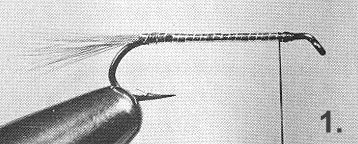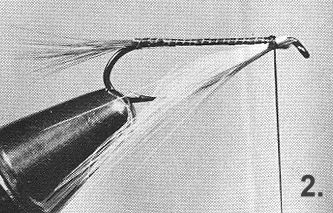Smallmouth bass feed extensively on minnows because the small
fish always seem to be in good supply in or near areas of
vegetation, downed trees, fallen limbs, and shallow spots
where bushes and trees hang out over and into the water.
One of our favorite minnow-imitating flies is the Black and
White Long Streamer. It is very effective in various shallow
water spots where schools of minnows congregate. There is
a tendency among fishermen to use streamers and bucktails that
are too large. The adage big streamers for big fish may have
some basis in fact, but we've caught plenty of large fish on
small streamers. And, between hooking those large fish we've
enjoyed catching many medium-sized fish that provided a lot
of excitement.
We've had good luck in the spring with streamers and bucktails
from 1 1/2 to 2 inches long, which is about the size of live
minnows most people normally use for crappie fishing. Later
in the year, or in especially fast water, we use that same
pattern tied a little larger, say 2 1/2 to 3 1/2 inches long.
I like to wade upstream when I'm streamer fishing. I try to
concentrate on wading slowly while using natural cover to conceal
my approach. Most of the smallmouths will be facing upstream in
the current, and I think by quietly wading up from behind, I can
get closer without frightening them, make better casts ahead of
their position and control the fly as it moves back down to
them.
Remember that minnows congregate in weed and grass beds where they
can find forage organisms and hide from predators. Those are
the areas you want to concentrate on when you are fishing
streamers. Keep the fly close to the vegetation and retrieve
it with movements that imitate a living minnow. Predators take
injured or ill minnows because they move slowly and are easy to
catch, so try to make your fly imitate the erratic movements of
a stricken minnor.

Materials
Hook: Mustad 9672, sizes 2-8.
Thread: Black monocord.
Tail: Red hackle fibers.
Body: Narrow flat silver tinsel.
Throat: Long white hackle fibers, short red
hackle fibers.
Wing: Black and white kip tail.
Tying Steps:

1. Tie red hackle fibers on shank above hook barb forming
tail. Tie a 6-inch piece of tinsel on hook shank at the
same point as tail is tied, then wrap tinsel forward along
shank to a point about 1/8 inch behind hook eye forming fly
body.

|





